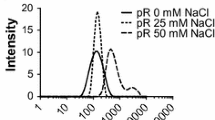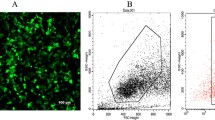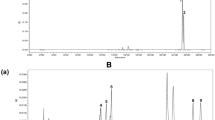Abstract
Dendritic cells (DCs) are potent antigen-presenting cells (APCs) that can promote antitumor immunity when pulsed with tumor antigens and then matured by stimulatory agents. Despite apparent progress in DC-based cancer immunotherapy, some discrepancies were reported in generating potent DCs. Listeria monocytogenes as an intracellular microorganism is able to effectively activate DCs through engaging pattern-recognition receptors (PRRs). This study aimed to find the most potent components derived from L. monocytogenes inducing DC maturation. The preliminary results demonstrated that the ability of protein components is higher than DNA components to promote DC maturation and activation. Protein lysate fractionation demonstrated that fraction 2 HIC (obtained by hydrophobic interaction chromatography) was able to efficiently mature DCs. F2HIC-matured DCs are able to induce allogeneic CD8+ T cells proliferation better than LPS-matured DCs and induce IFN-γ producing CD8+ T cells. Mass spectrometry results showed that F2HIC contains 109 proteins. Based on the bioinformatics analysis for these 109 proteins, elongation factor Tu (EF-Tu) could be considered as a PRR ligand for stimulating DC maturation.












Similar content being viewed by others
References
Banchereau J, Steinman RM. Dendritic cells and the control of immunity. Nature. 1998;392:245–52.
Figdor CG, de Vries IJ, Lesterhuis WJ, Melief CJ. Dendritic cell immunotherapy: mapping the way. Nat Med. 2004;10:475–80.
Steinman RM, Banchereau J. Taking dendritic cells into medicine. Nature. 2007;449:419–26.
Schuler G, Schuler-Thurner B, Steinman RM. The use of dendritic cells in cancer immunotherapy. Curr Opin Immunol. 2003;15:138–47.
Lutz MB, Schuler G. Immature, semi-mature and fully mature dendritic cells: which signals induce tolerance or immunity? Trends Immunol. 2002;23:445–9.
Hilkens CM, Isaacs JD, Thomson AW. Development of dendritic cell-based immunotherapy for autoimmunity. Int Rev Immunol. 2010;29:156–83.
Rutella S, Danese S, Leone G. Tolerogenic dendritic cells: cytokine modulation comes of age. Blood. 2006;108:1435–40.
Langenkamp A, Messi M, Lanzavecchia A, Sallusto F. Kinetics of dendritic cell activation: impact on priming of th1, th2 and nonpolarized t cells. Nat Immunol. 2000;1:311–6.
Kapsenberg ML. Dendritic-cell control of pathogen-driven t-cell polarization. Nat Rev Immunol. 2003;3:984–93.
Reis e Sousa C. Dendritic cells as sensors of infection. Immunity. 2001;14:495–8.
Pamer EG. Immune responses to listeria monocytogenes. Nat Rev Immunol. 2004;4:812–23.
Khamisabadi M, Arab S, Motamedi M, Khansari N, Moazzeni SM, Gheflati Z, et al. Listeria monocytogenes activated dendritic cell based vaccine for prevention of experimental tumor in mice. Iran J Immunol. 2008;5:36–44.
Saei A, Boghozian R, Mirzaei R, Jamali A, Vaziri B, Hadjati J. Listeria monocytogenes protein fraction induces dendritic cells maturation and t helper 1 immune responses. Iran J Allergy Asthma Immunol. 2014;13:1–10.
Del Rio L, Butcher BA, Bennouna S, Hieny S, Sher A, Denkers EY. Toxoplasma gondii triggers myeloid differentiation factor 88-dependent il-12 and chemokine ligand 2 (monocyte chemoattractant protein 1) responses using distinct parasite molecules and host receptors. J Immunol. 2004;172:6954–60.
Sallusto F, Lanzavecchia A. Efficient presentation of soluble antigen by cultured human dendritic cells is maintained by granulocyte/macrophage colony-stimulating factor plus interleukin 4 and downregulated by tumor necrosis factor alpha. J Exp Med. 1994;179:1109–18.
Nourizadeh M, Masoumi F, Memarian A, Alimoghaddam K, Moazzeni SM, Yaghmaie M, et al. In vitro induction of potent tumor-specific cytotoxic t lymphocytes using tlr agonist-activated aml-dc. Target Oncol. 2014;9:225–37.
Park MH, Yang DH, Kim MH, Jang JH, Jang YY, Lee YK, et al. Alpha-type 1 polarized dendritic cells loaded with apoptotic allogeneic breast cancer cells can induce potent cytotoxic t lymphocytes against breast cancer. Cancer Res Treat. 2011;43:56–66.
Keyvanshokooh S, Vaziri B, Gharaei A, Mahboudi F, Esmaili-Sari A, Shahriari-Moghadam M. Proteome modifications of juvenile beluga (huso huso) brain as an effect of dietary methylmercury. Comp Biochem Physiol Part D Genomics Proteomics. 2009;4:243–8.
Reza Mirzaei SA, Masoumeh Motamedi Motamedi, Afshin Amari, Jamshid Hadjati. The opposite effects of DNA and protein components of listeria monocytogenes and toxoplasma gondii on immunologic characteristics of dendritic cells. Iran J Allergy Asthma Immunol 2015;14(3):313–20.
Motamedi M, Arab S, Moazzeni SM, Khamis Abadi M, Hadjati J. Improvement of a dendritic cell-based therapeutic cancer vaccine with components of toxoplasma gondii. Clin Vaccine Immunol. 2009;16:1393–8.
Pourgholaminejad A, Jamali A, Samadi-Foroushani M, Amari A, Mirzaei R, Ansaripour B, et al. Reduced efficacy of multiple doses of cpg-matured dendritic cell tumor vaccine in an experimental model. Cell Immunol. 2011;271:360–4.
Mellor AL, Baban B, Chandler PR, Manlapat A, Kahler DJ, Munn DH. Cutting edge: Cpg oligonucleotides induce splenic cd19+ dendritic cells to acquire potent indoleamine 2,3-dioxygenase-dependent t cell regulatory functions via ifn type 1 signaling. J Immunol. 2005;175:5601–5.
Moseman EA, Liang X, Dawson AJ, Panoskaltsis-Mortari A, Krieg AM, Liu YJ, et al. Human plasmacytoid dendritic cells activated by cpg oligodeoxynucleotides induce the generation of cd4+cd25+ regulatory t cells. J Immunol. 2004;173:4433–42.
Hoene V, Peiser M, Wanner R. Human monocyte-derived dendritic cells express tlr9 and react directly to the cpg-a oligonucleotide d19. J Leukoc Biol. 2006;80:1328–36.
Hartmann G, Weiner GJ, Krieg AM. Cpg DNA: a potent signal for growth, activation, and maturation of human dendritic cells. Proc Natl Acad Sci U S A. 1999;96:9305–10.
Kadowaki N, Ho S, Antonenko S, Malefyt RW, Kastelein RA, Bazan F, et al. Subsets of human dendritic cell precursors express different toll-like receptors and respond to different microbial antigens. J Exp Med. 2001;194:863–9.
Re F, Strominger JL. Toll-like receptor 2 (tlr2) and tlr4 differentially activate human dendritic cells. J Biol Chem. 2001;276:37692–9.
Krab IM, Parmeggiani A. Ef-tu, a gtpase odyssey. Biochim Biophys Acta. 1998;1443:1–22.
Archambaud C, Gouin E, Pizarro-Cerda J, Cossart P, Dussurget O. Translation elongation factor ef-tu is a target for stp, a serine-threonine phosphatase involved in virulence of listeria monocytogenes. Mol Microbiol. 2005;56:383–96.
Liu H, Cheng Z, Song W, Wu W, Zhou Z. Immunoproteomic to analysis the pathogenicity factors in leukopenia caused by klebsiella pneumonia bacteremia. PLoS One. 2014;9:e110011.
Bunk S, Susnea I, Rupp J, Summersgill JT, Maass M, Stegmann W, et al. Immunoproteomic identification and serological responses to novel chlamydia pneumoniae antigens that are associated with persistent c. Pneumoniae infections. J Immunol. 2008;180:5490–8.
Gupta MK, Subramanian V, Yadav JS. Immunoproteomic identification of secretory and subcellular protein antigens and functional evaluation of the secretome fraction of mycobacterium immunogenum, a newly recognized species of the mycobacterium chelonae-mycobacterium abscessus group. J Proteome Res. 2009;8:2319–30.
Harding SV, Sarkar-Tyson M, Smither SJ, Atkins TP, Oyston PC, Brown KA, et al. The identification of surface proteins of burkholderia pseudomallei. Vaccine. 2007;25:2664–72.
Nieves W, Heang J, Asakrah S, Honer zu Bentrup K, Roy CJ, Morici LA. Immunospecific responses to bacterial elongation factor tu during burkholderia infection and immunization. PLoS One. 2010;5, e14361.
Sharma J, Mishra BB, Li Q, Teale JM. Tlr4-dependent activation of inflammatory cytokine response in macrophages by francisella elongation factor tu. Cell Immunol. 2011;269:69–73.
Lopez JE, Beare PA, Heinzen RA, Norimine J, Lahmers KK, Palmer GH, et al. High-throughput identification of t-lymphocyte antigens from anaplasma marginale expressed using in vitro transcription and translation. J Immunol Methods. 2008;332:129–41.
Author information
Authors and Affiliations
Corresponding author
Ethics declarations
Conflicts of interest
None
Rights and permissions
About this article
Cite this article
Mirzaei, R., Saei, A., Torkashvand, F. et al. Identification of proteins derived from Listeria monocytogenes inducing human dendritic cell maturation. Tumor Biol. 37, 10893–10907 (2016). https://doi.org/10.1007/s13277-016-4933-1
Received:
Accepted:
Published:
Issue Date:
DOI: https://doi.org/10.1007/s13277-016-4933-1




